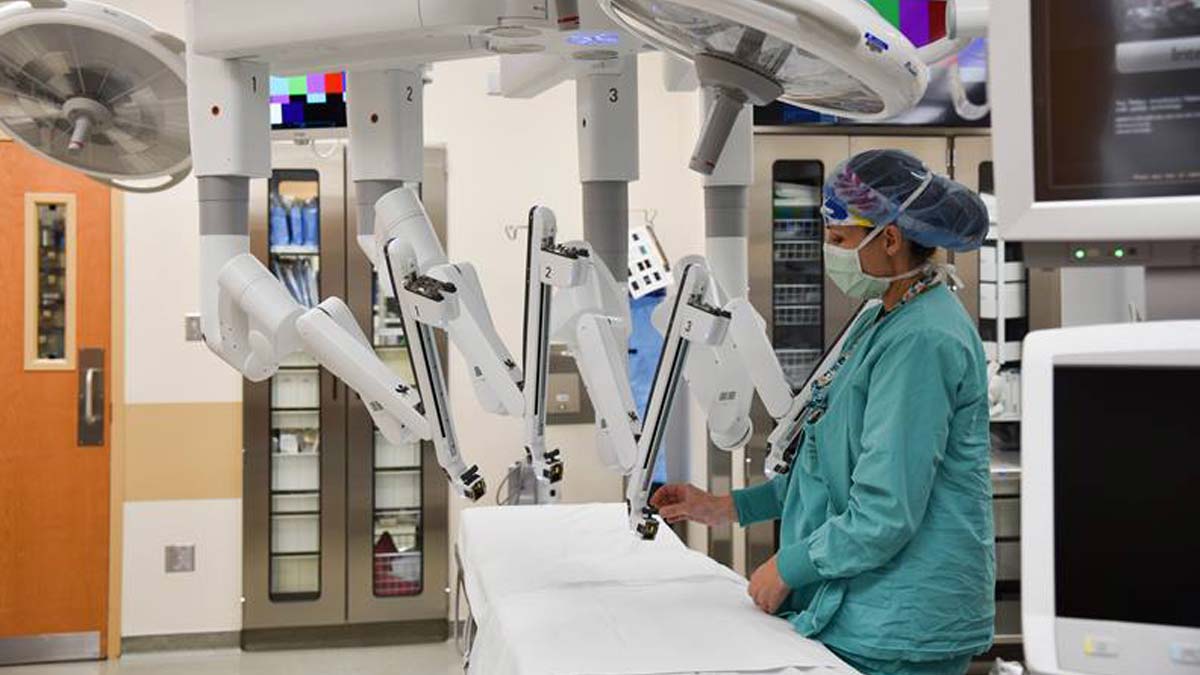Fast technological development enhances the medical field with new and improved devices. Mainly the development of robotic-assisted surgical devices raised patient care and outcomes. Specifically, the robotic technology helping the human operator in abating variability and enhancing the exactitude of surgical manoeuvre.
The robot-assisted minimally invasive surgery can be redacted with short excisions. This is less hurting than the traditional surgical process and outcomes in small scar tissue left behind. It is very helpful for patients, because of simple, less painful surgery and very quick recovery periods and also for surgeons, robotic surgery helps them to acquire a higher degree of legibility and efficiency.
The revolution of recent robots used for making surgeries and medical purpose upgraded up to the fifth generation. The evolution of the robots happened in steps given below:
1. The very first robots were mainly mechanical machines sketched to carry through earmarked human-selected tasks. It was known as prototype robots. Its implementation in healthcare was inaugurated through the diagram of tools mainly geared at acquiring a sophisticated stage of clearness for brain biopsies, where exquisite mistakes could lead to demolishing results.
2. The primary surgical robot known as first-generation robots in clinical practice was first used as the first laparoscopic cholecystectomy. This robot was exploited for stereotaxic brain biopsy with the surgeon putting the hands of the robots in a position to fulfil its task. This device performed as a pioneer to a modified brain tumour incision. Likewise in orthopaedics, robots were commenced to fulfil the methods that had transparent mathematical and mechanical tactics where tissue tactility and tissue vulnerability had been restricted; the port enable geometry of the end-result was of critical tenor in the results.
3. The initiation of the second generation of surgical robots has an outcome in the utmost propagation of the notion of robotic surgery to date. This has been as an outcome of the initiation of soft-tissue surgical ability. This is also for the requirement in the market for highly exact robotic systems to perform in stereo endoscopic stages such as laparoscopy or thoracoscopy. This generation robots brought the solutions of many issues :
i. It helped to overcome the obstacle in ingress to tissue places and organ systems as an outcome of anatomical guards as thee thoracic cavity the reason of torque and needing mere physicality to address.
ii. Scarcity of tactile from few tissues at the time of operating them.
4. The surgical robots have resorted to the ethics of biomimicry and multiple articulation technology for multiple surgical pathologies.
5. The notion of microscopic robots also known as microbots has existed in the public environment. Just like third-generation robots, these microbots will be beneficial from import in biomimicry whereas an example of locomotion would be emerged on electromagnetic steering or even autonomous locomotion emerged on insect-like, fish-like, snake-like or bacteria or parasite-like technology. These systems are able to work with installed imaging modalities but also has the capability to offer a higher resolution micrometre real-time portray of diseases and patient anatomy.
6. Since the first generation of surgical robots have been modelled to defray a degree of autonomous capacity to act the separate pre-programmed tasks, the idea of totally autonomous, human-level cognition robots leftover chiefly conceptual. These autonomous robots will be beneficial from the improved machine-learning ability that will need next-generation Turing test intelligence. They will receive the form of first four-generation of robots with added autonomous decision-making ability.
The several medical fields such as surgical oncology, urology, and gynaecology or oncology are controlling the path in enhancing robotic assistance. Now here is an overview of improvement of robot-assisted surgery in some specific medical fields :
7. Robotics in surgical oncology :
Robotic technology is generally applied in gynaecological oncology, mainly in the treatment of endometrial and cervical cancer. According to the da Vinci surgical method, the literature in this layout has pointed out that robotic surgery combined with less blood loss, reduce the staying period in hospital, less painful than laparoscopy for patients with endometrial cancer along with myomectomies.
In the case of urology, robotics offers a helpful nook and answer to challenging open or laparoscopic methods.
8. Robotics in spine surgery :
Robotics payoff the important utility in spine surgery, mainly as a support to pedicel screw instrumentation. Posterior pedicle screw instrumentation is an essential part of many spine processes and oversight of placement despite the use of conventional fluoroscopy can outcome in neurovascular damage or construct decay.
Implementation of robotics in spine tumour surgery for metastatic expansion of cancer with prostate and breast cancer setting is more than two-thirds of these metastases. This is also helpful in the incision of spine tumours in different position.
The conclusive use of robotics encloses the capability of the systems to recognize and perceive perverted spinal anatomy and lend the fact that the surgeon who is operating can utilize it to deliver personalized care to every patient in need.
